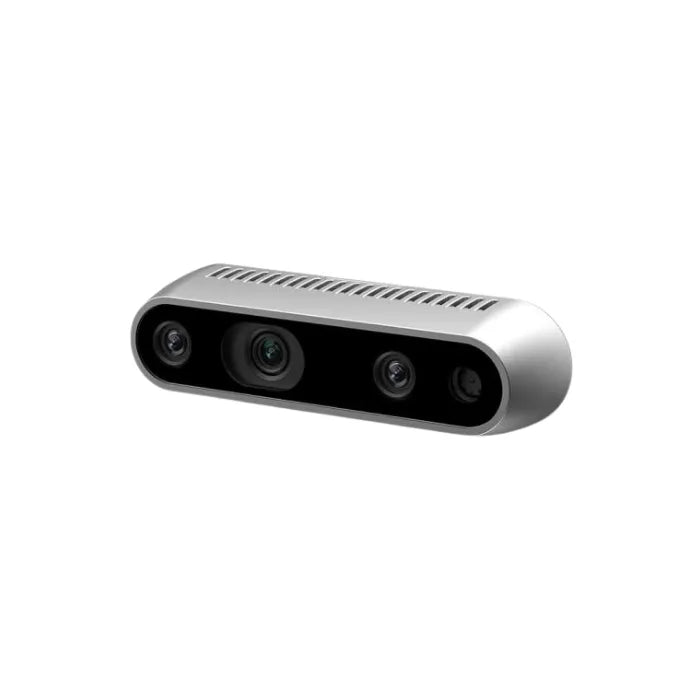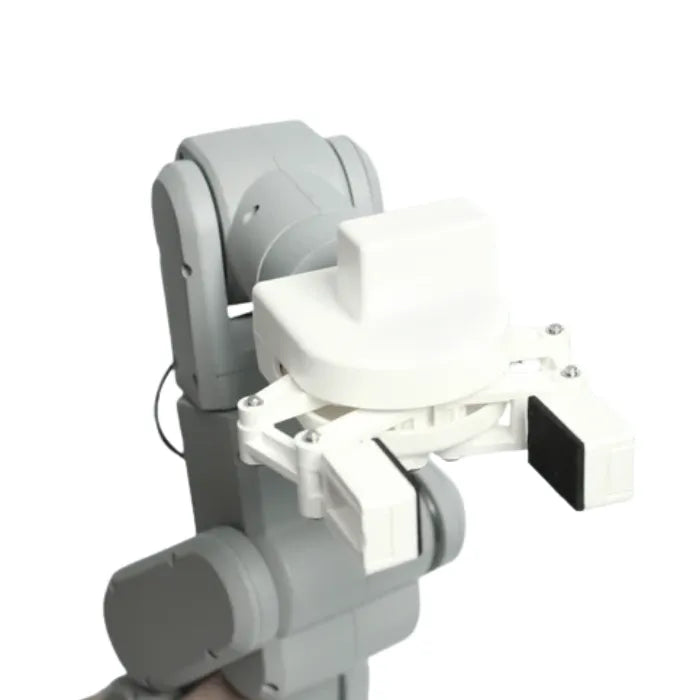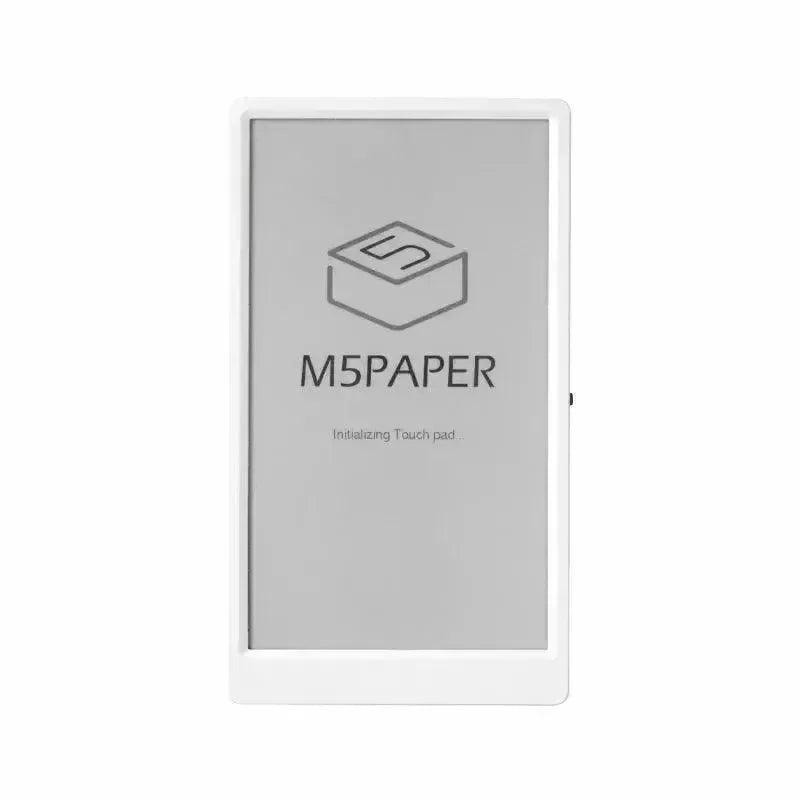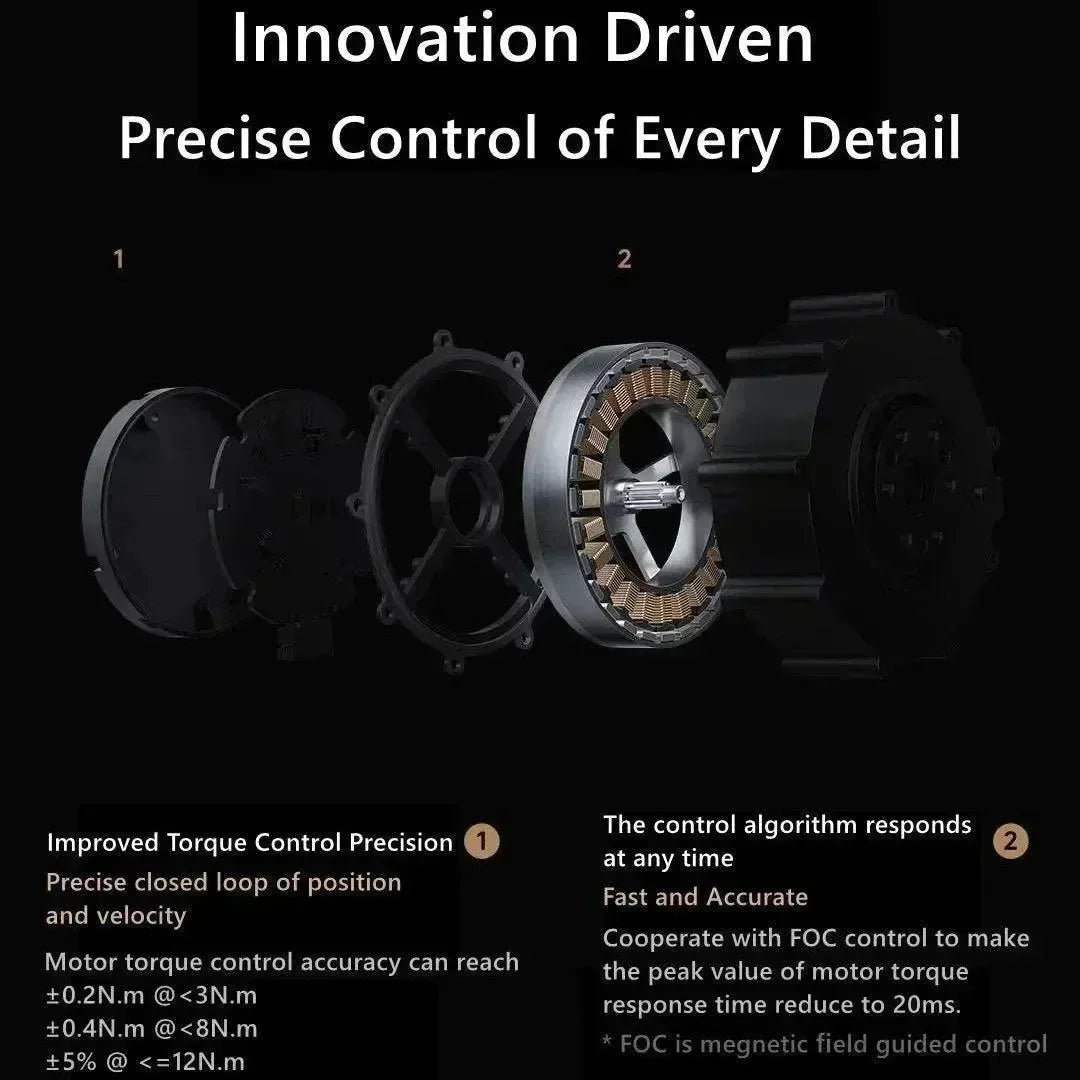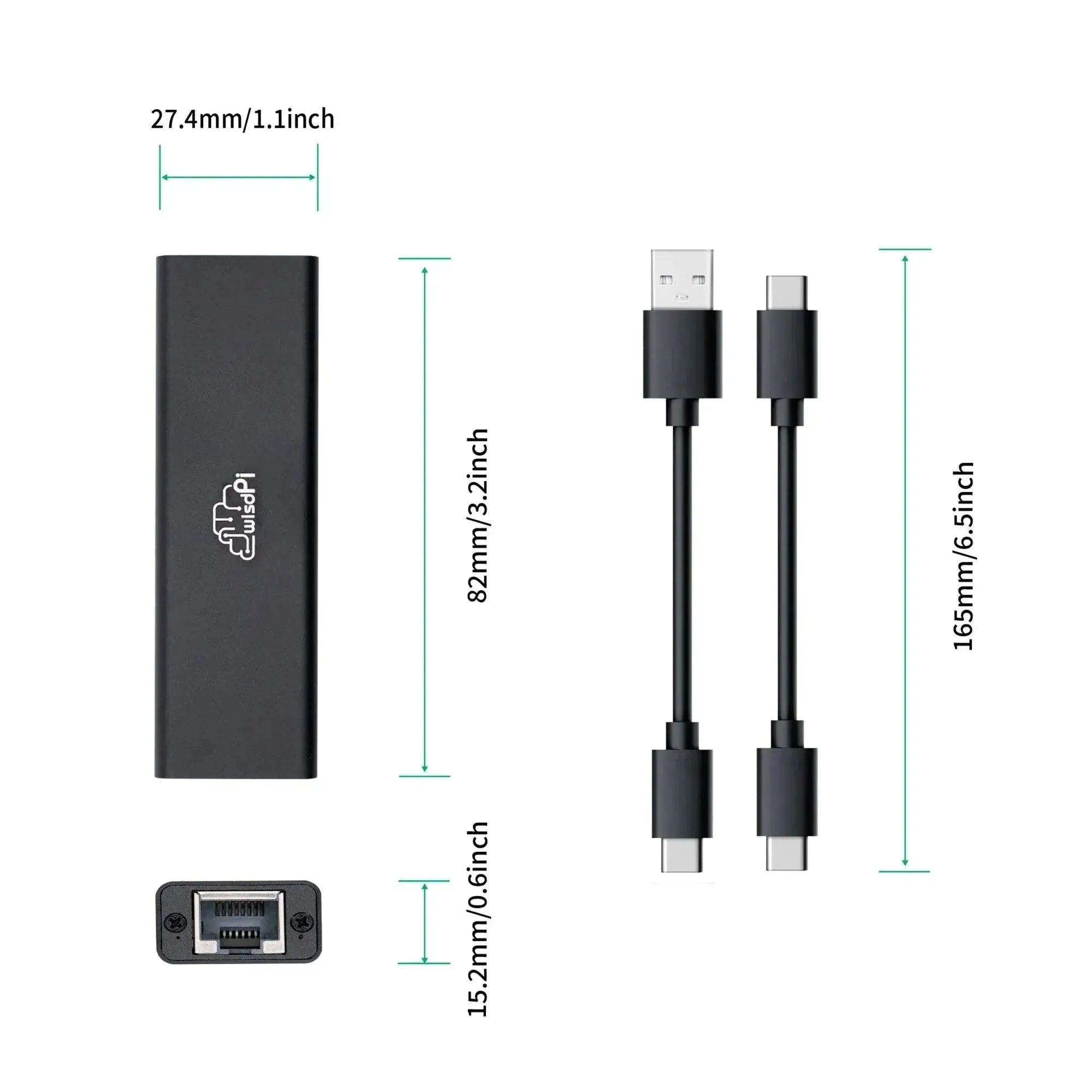Mikrocontroller und Rechenleistung
-
M5Paper V1.1: Verwendet den ESP32-Mikrocontroller, bekannt für seinen Dual-Core-LX6-Prozessor mit bis zu 240 MHz. Es ist ein vielseitiger Chip, der für eine Reihe von IoT-Anwendungen geeignet ist.
-
M5PaperS3: Upgrades auf den ESP32-S3R8, der einen fortschrittlichen Dual-Core-LX7-Prozessor mit 240 MHz bietet. Dieser neuere Chip bietet verbesserte Leistung, Sicherheitsfunktionen und Unterstützung für USB OTG, was ihn für komplexe Projekte leistungsfähiger macht
Anzeige und Interaktion
Beide Geräte haben die gleichen Display-Spezifikationen:
-
Display: Ein 4,7" E-Ink-Bildschirm mit einer Auflösung von 960x540 Pixeln, der eine ausgezeichnete Lesbarkeit bei geringem Stromverbrauch bietet. Die Interaktionsmöglichkeiten unterscheiden sich jedoch:
-
M5Paper V1.1: Verfügt über einen kapazitiven Touchscreen, bietet jedoch nicht die erweiterten Funktionen des M5PaperS3.
-
M5PaperS3: Verfügt ebenfalls über einen kapazitiven Touchscreen, jedoch mit erweiterten Funktionen wie Zwei-Punkt-Berührung und Gestenunterstützung durch das GT911 Touchpanel.
-
Arbeitsspeicher und Datenspeicher
-
M5Paper V1.1: Ausgestattet mit 520 KB SRAM, 4MB PSRAM und 16MB Flash, bietet es ausreichend Speicher für grundlegende IoT-Anwendungen.
-
M5PaperS3: Verfügt über deutlich mehr Speicher mit 8MB PSRAM, 16MB externem Flash und dem zusätzlichen Vorteil der MicroSD-Kartenunterstützung für erweiterbaren Speicher, was für Anwendungen, die Datenprotokollierung oder die Verarbeitung großer Datensätze erfordern, entscheidend ist.
Konnektivität
-
M5Paper V1.1: Bietet Wi-Fi und Bluetooth 4.2 für drahtlose Kommunikation, geeignet für die meisten IoT-Konnektivitätsanforderungen.
-
M5PaperS3: Obwohl es Wi-Fi bietet, erwähnt die Dokumentation Bluetooth nicht explizit. Aufgrund der ESP32-S3-Fähigkeiten wird jedoch Bluetooth 5.0-Unterstützung impliziert, was im Vergleich zu Bluetooth 4.2 eine verbesserte Geschwindigkeit und Reichweite bietet.
Batterie- und Energiemanagement
- M5Paper V1.1: Wird mit einem 1200 mAh Akku geliefert, ausreichend für viele IoT-Projekte, aber weniger als das M5PaperS3.
- M5PaperS3: Verfügt über einen größeren 1800 mAh Akku, kombiniert mit einem ausgefeilteren Energiemanagementsystem einschließlich eines RTC-Chips (BM8563) für Schlaf- und Aufwachfunktionen, was eine verbesserte Akkulaufzeit und -verwaltung bietet.
Zusätzliche Funktionen
-
M5Paper V1.1: Bietet grundlegende Funktionen wie einen Umgebungslichtsensor, Grove-Anschlüsse zur Erweiterung und kapazitive Berührung.
-
M5PaperS3: Erweitert die Funktionspalette um:
-
Gyroskop (BMI270) zur Bewegungserkennung.
-
An Bord Summer für akustisches Feedback.
-
Physische Taste zur Stromverwaltung und Gerätesteuerung.
-
Rückmagnet zur Befestigung auf Metalloberflächen.
-
Aufhängehaken für einfaches Tragen.
-
USB-OTG-Funktionalität zum Anschluss externer Geräte.
-
Ideale Anwendungen
-
M5Paper V1.1: Am besten geeignet für einfache IoT-Projekte, bei denen grundlegende Anzeigeoptionen, Touch-Interaktion und moderate Konnektivität erforderlich sind. Ideal für digitale Beschilderung, einfache IoT-Überwachung oder als Bildungswerkzeug.
-
M5PaperS3: Maßgeschneidert für fortgeschrittenere IoT-Anwendungen, die hochauflösendere Displays, mehr Speicher, verbesserte Interaktion (Touch und Gesten) und längere Akkulaufzeit erfordern. Es ist perfekt für:
-
Detaillierte Grafiken oder Textanzeige.
-
Projekte, die Bewegungserkennung oder Vibrationsrückmeldung beinhalten.
-
Anwendungen, die USB OTG-Funktionalität für die Datenübertragung oder Gerätesteuerung benötigen.
-
Fortschrittliche IoT-Überwachung mit Datenprotokollierungsfunktionen.
-
Entwicklungsumgebung
Beide Geräte unterstützen Arduino IDE, MicroPython und ESP-IDF für die Entwicklung. Das M5PaperS3 unterstützt jedoch auch UIFlow 2.0 und Platform.IO, was Entwicklern mehr Optionen bietet, insbesondere denen, die visuelle Programmierung oder fortgeschrittene IDEs bevorzugen.
Hauptmerkmale
| Besonderheit | M5Paper V1.1 | M5PaperS3 |
| Mikrocontroller | ESP32 (Dual-Core LX6 @ 240 MHz) | ESP32-S3R8 (Dual-Core LX7 @ 240 MHz) |
| Anzeige | 4,7" E-Ink, 960x540 px | 4,7" E-Ink, 960x540 px |
| Auflösung | 960x540 | 960x540 |
| Konnektivität | Wi-Fi, Bluetooth 4.2 | Wi-Fi (2,4 GHz), Bluetooth 5.0 (impliziert, aber nicht erwähnt in der bereitgestellten Dokumentation) |
| Erinnerung | 520 KB SRAM, 4 MB PSRAM, 16 MB Flash |
8 MB PSRAM, Externer 16-MB-Flash-Speicher |
| Batterie | 1200 mAh | 1800 mAh |
| Sensoren | Umgebungslichtsensor | Gyroskop (BMI270) |
| Zusätzliche Funktionen | Kapazitive Berührung Echtzeituhr - Grove-Häfen |
- Kapazitiver Touch (GT911) RTC (BM8563) USB OTG Onboard-Summer Physischer Knopf Rückmagnet - Aufhängehaken |
| USB-OTG-Unterstützung | NEIN | Ja |
| Bluetooth-Version | 4.2 | 5.0 (impliziert, aber nicht erwähnt in der bereitgestellte Dokumentation) |
| Ideal für | - Einfache IoT-Projekte Digitale Beschilderung |
- Fortgeschrittene IoT-Projekte - Detaillierte Grafik-/Textanzeige - Bewegungsmelder-Anwendungen |
| Preispunkt | Im Allgemeinen niedriger aufgrund weniger Funktionen |
Höher aufgrund verbesserter Funktionen und größere Batterie |
| Entwicklungsumgebung | Arduino IDE, MicroPython | Arduino IDE, Platform.IO, UIFlow 2.0, ESP-IDF |
Abschluss
Der M5Paper V1.1 und M5PaperS3 bedienen unterschiedliche Segmente des IoT-Marktes. Der V1.1 ist eine ausgezeichnete Wahl für einfache, stromsparende E-Paper-Anwendungen, bei denen Kosteneffizienz im Vordergrund steht. Im Gegensatz dazu ist der M5PaperS3 für diejenigen konzipiert, die erweiterte Funktionen, höhere Leistung und erweiterte Möglichkeiten suchen, was ihn ideal für komplexere IoT-Projekte macht. Bei der Wahl zwischen diesen beiden sollten Sie die spezifischen Anforderungen Ihres Projekts, das benötigte Interaktionsniveau und ob die zusätzlichen Funktionen des M5PaperS3 die potenziell höheren Kosten rechtfertigen, berücksichtigen. Denken Sie daran, die neuesten Spezifikationen und Funktionen von M5Stack oder deren offiziellen Vertriebspartnern für die aktuellsten Informationen zu überprüfen.
Das könnte Ihnen auch gefallen
Wie erstellt man einen E-Ink-Reader mit M5Paper?
M5Paper vs. M5Stack Core Ink: Welches ist besser?























